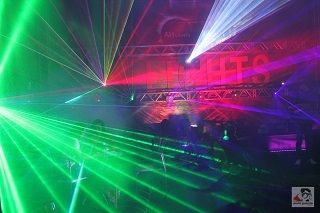From the Mysterious Guest Blogger "Edison Bulb" — Demystifying LED Lighting Rebates: How To Save On Your Next Upgrade Without Breaking A Sweat

While the initial cost might seem daunting, one of the best things about switching to LED lights is the fact that energy-efficient lighting can yield more than 45% return on investment in just over two years. However, many businesses and building managers are still missing out on a significant amount of immediate savings from federal and state utility rebates—some of which cover up to 50% of the initial installation costs!
Every state in the US has rebate offerings for switching to energy-efficient lights; the number of available rebates increased by a whopping 220% in 2014. Utility companies are encouraging the replacement of outdated fixtures. Why? The simple fact is, controlling demand is cheaper than building new power plants and power lines to handle the increasing need for electricity. The US Energy Information Administration predicted in 2012 that demand for electricity will increase 28% by 2035. That’s a staggering 1.7 billion additional kilowatt hours; we’re quickly seeing how crucial it is to find super-efficient lighting solutions.
Federal regulations are also working toward phasing out old, less-efficient lighting technologies. Strict regulations have essentially made the T12 linear fluorescent lamp obsolete, and other commercial lamp types, like T8 fluorescents, may be close behind. For businesses and commercial property owners with flickering fluorescent lighting, the time to move forward with LED lights is now.
So what do you need to know about utility rebates?
Generally, there are two kinds of rebates: prescriptive rebates and custom rebates. Custom rebates offer payment for the energy you will save by upgrading to LED for a specific project, including the energy saved by reducing the number of fixtures with a redesign. Prescriptive rebates offer a fixed amount for each fixture replaced. The types of rebates available vary by state and utility company. Some are first-come, first-serve, while others have a set time limit for applying.
Finding the right rebates for your project doesn’t have to be difficult. The Energy Star website is a great resource for finding rebates based on product type and location. The US Department of Energy has also created the Database for State Incentives for Renewable and Efficiency, or the DSIRE. The DSIRE enables users to search for rebates and other financial incentives, such as loan programs, by state. Also, large, name-brand lighting manufacturers typically have rebate incentives that can help you save.
If you’re updating your commercial or residential lighting to LED, don’t forget to check for rebates! You could potentially save hundreds of dollars on initial installation and reap the benefits of energy savings for years to come.

fantastic usage of terminology within the
article, it in reality did help when i was reading